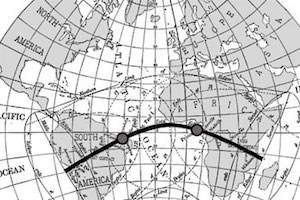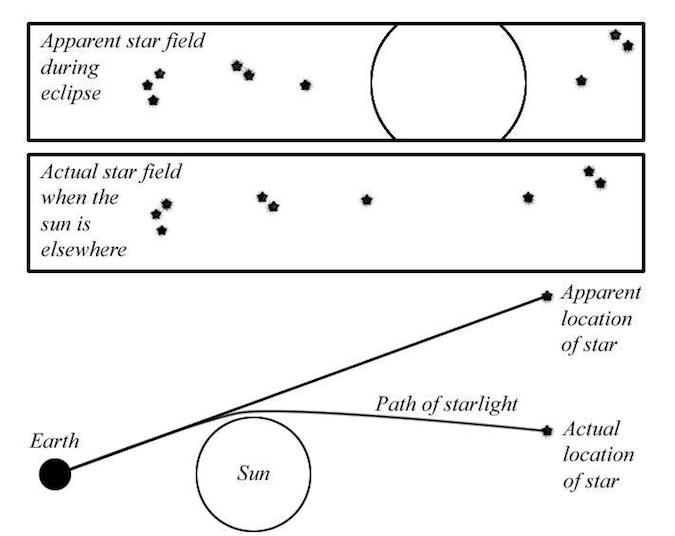Why a Total Solar Eclipse?

Image credit: Royal Observatory Greenwich
The path of totality for the eclipse of May 29, 1919 spanned the Atlantic (dark line); the eclipse was very long — nearly seven minutes at its maximum duration. The two dots indicate the positions of the expeditions led by Dr. Crommelin for the Royal Greenwich Observatory (left) and Prof. Eddington for Cambridge University (right).
According to predictions by both Sir Isaac Newton and Dr. Albert Einstein, a ray of light from a star very close to the Sun (as seen from Earth) will be bent (deflected) as it passes by the edge of the Sun. Such a deflection would make the star look slightly farther away from the edge of the Sun than it really is.
Dr. Einstein's theory of relativity predicts that the amount of the deflection should be twice as great as the deflection Newton predicted.
Astronomers would get the best results the more stars around the Sun during a solar eclipse and the more photographs they took. This would provide greater accuracy in comparing Dr. Einstein's predictions to Newton's. Each year on May 29 as the Earth revolves around the Sun, the Sun appears to pass in front of a cluster of stars in the constellation of Taurus. This cluster of stars, called Hyades, is so bright that it is clearly visible in the night sky even without a telescope months later during the winter.
The only time this star cluster could be viewed on May 29 would be if the Sun were totally eclipsed and its light was blocked. On May 29, 1919 such an eclipse did occur, and this bit of good fortune allowed Dr. Einstein's prediction to be accurately tested. •

Image credit: NASA's Cosmic Times
Illustrations showing how the bending of starlight. Top: The apparent positions of the stars during the eclipse when their light is bent around the Sun. Middle: The positions of the stars when their light is not bent around the Sun. Bottom: The actual path of the light as it bends near the Sun and reaches Earth, and the apparent position of that star as a result of its light bending around the Sun.



